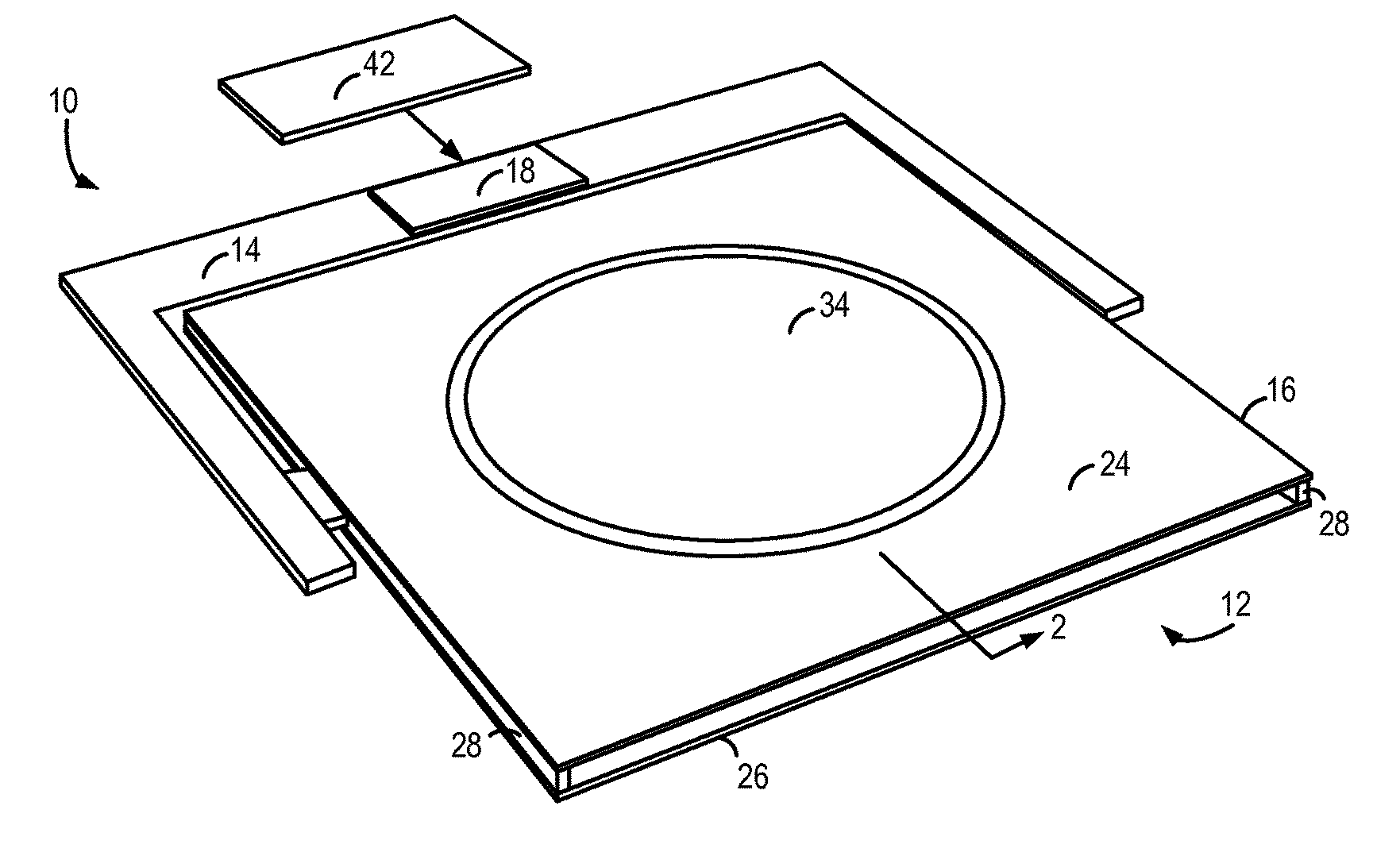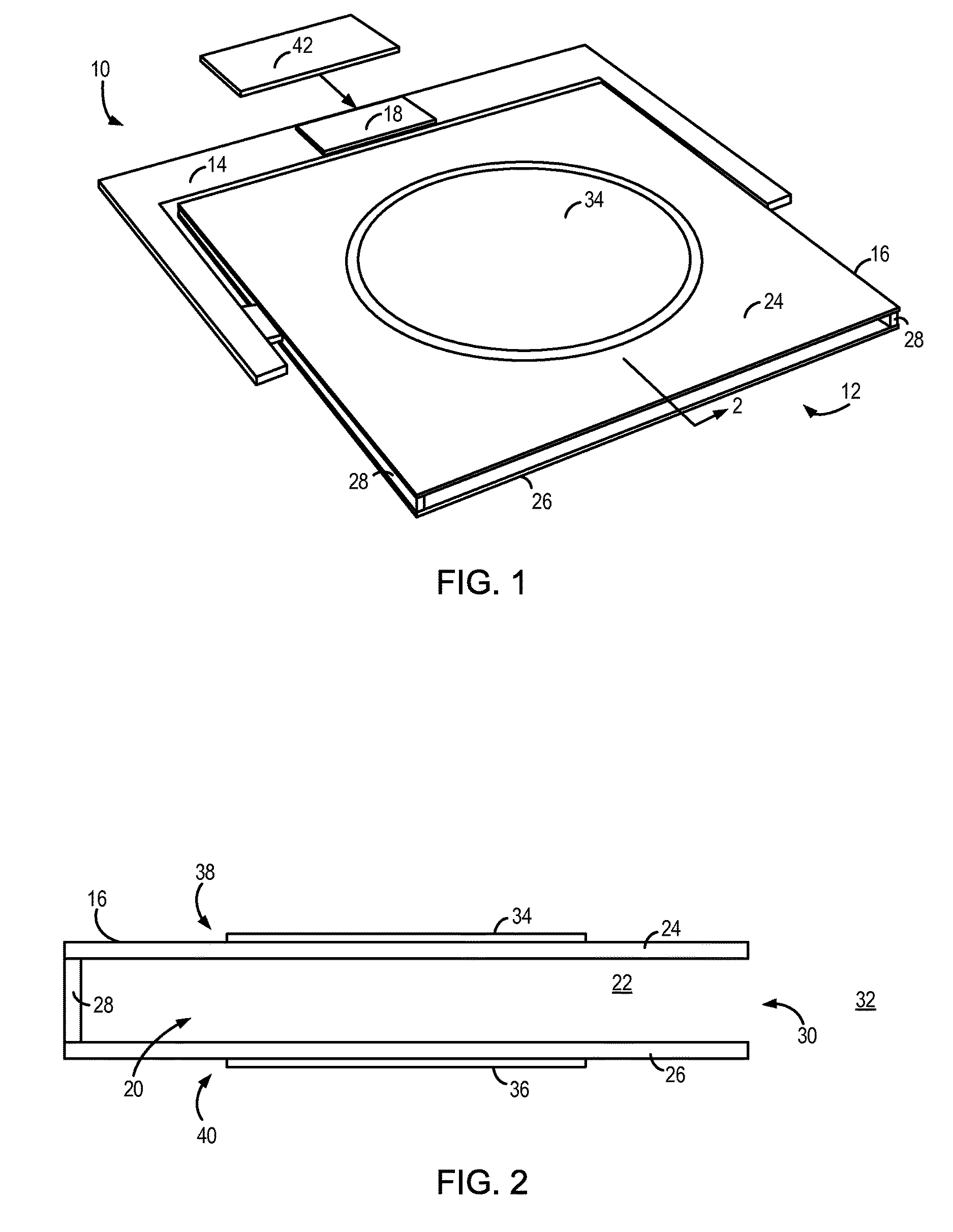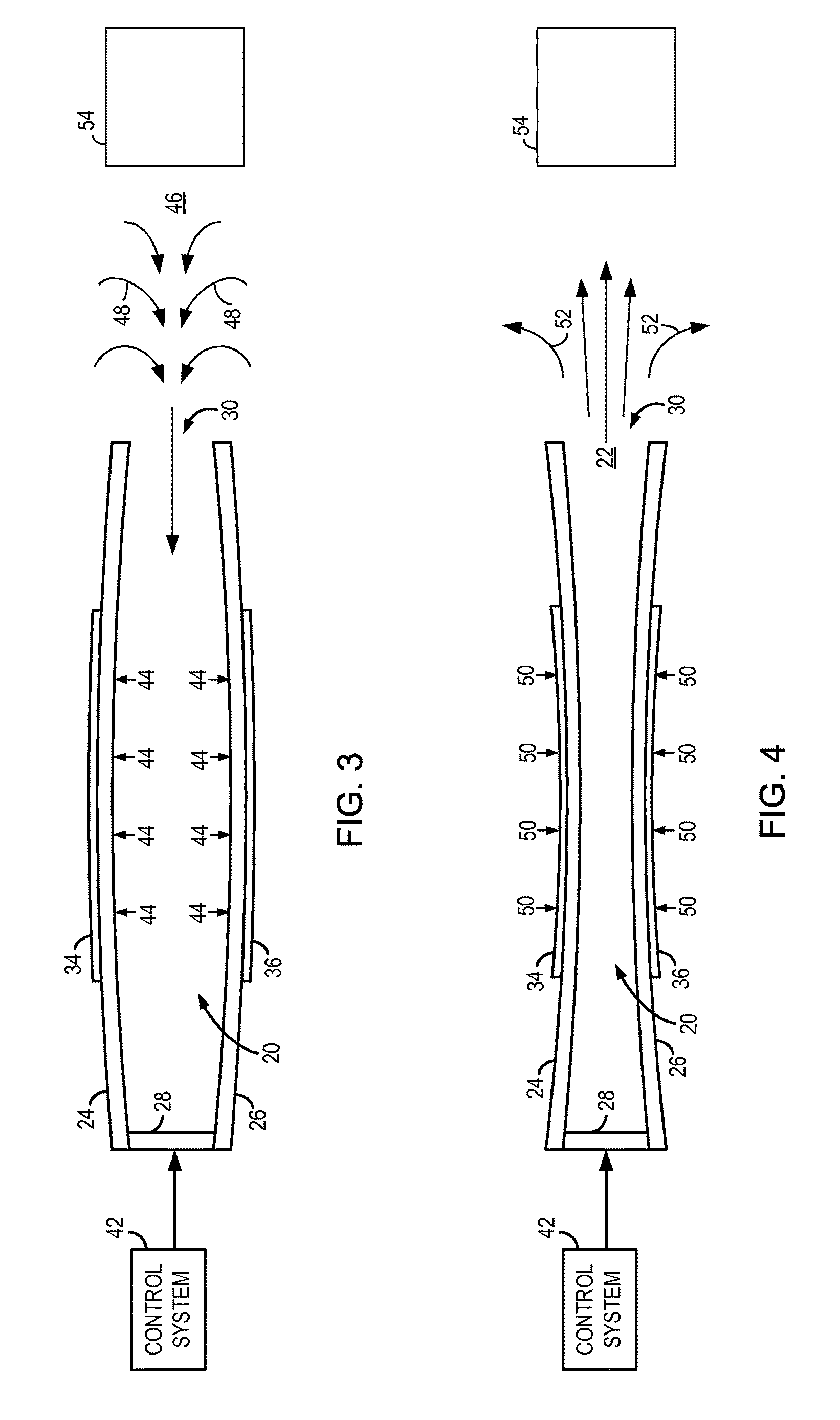System and method for enhanced convection cooling of temperature-dependent power producing and power consuming electrical devices
a technology of electrical devices and convection cooling, which is applied in the direction of temperatue control, process and machine control, instruments, etc., can solve the problems of high correlation between heat emission and power consumption of devices, temperature-dependent efficiency of pv panels, and increase in temperature, so as to maximize the net system power output and minimize the total system power input
- Summary
- Abstract
- Description
- Claims
- Application Information
AI Technical Summary
Benefits of technology
Problems solved by technology
Method used
Image
Examples
Embodiment Construction
[0019]Embodiments of the invention relate to a system and method for enhanced convection cooling of temperature-dependent power producing or power consuming electrical devices. A cooling system that provides enhanced convection cooling is operated via a control scheme that varies the amount of convection cooling provided by the cooling system in order to maximize the net system power output of power producing electrical devices or to minimize the total system power consumption of power consuming electrical devices. The convection cooling provided by the cooling system is selectively controlled via the implemented control scheme during changing operating conditions of the temperature-dependent power producing / power consuming electrical devices.
[0020]According to embodiments of the invention, a cooling system for enhanced convection cooling of temperature-dependent power producing or power consuming electrical devices includes low power active cooling device(s) to provide the convecti...
PUM
 Login to View More
Login to View More Abstract
Description
Claims
Application Information
 Login to View More
Login to View More - R&D
- Intellectual Property
- Life Sciences
- Materials
- Tech Scout
- Unparalleled Data Quality
- Higher Quality Content
- 60% Fewer Hallucinations
Browse by: Latest US Patents, China's latest patents, Technical Efficacy Thesaurus, Application Domain, Technology Topic, Popular Technical Reports.
© 2025 PatSnap. All rights reserved.Legal|Privacy policy|Modern Slavery Act Transparency Statement|Sitemap|About US| Contact US: help@patsnap.com



